Perigonia lusca
|
|
Updated as per http://www.pybio.org/MACROGLOSSINAE.htm (Paraguay), November 2007
Updated as per personal communication with Tony James (Gamboa, Panama, June flight), October 2008
Updated as per
AN ANNOTATED CHECKLIST OF THE SPHINGIDAE OF BOLIVIA, December 2009
Updated as per CATE (description; Cuba, Mexico, Costa Rica, Ecuador, Peru, Bolivia); February 18, 2011
Updated as per personal communication with Peter Bruce-Jones (Shima, Junin, Peru, 700m, June 12, 2010); February 18, 2011
Updated as per personal communication with Gregory Nielsen (Villavicencio, Meta, Colombia): March 24, 2011
Updated as per personal communication with Ben Trott (Playa del Carmen, Quintana Roo, Mexico); February 26, 2012
Updated as per "A Hawk Moths fauna of southern Maranhão state, Brazil, ... "; NEVA: Jahrgang 34 Heft 3 November 2013; via Jean Haxaire; April 5, 2014
Updated as per personal communication with Sergio D. Ríos Díaz in CATÁLOGO DE LOS SPHINGIDAE (INSECTA: LEPIDOPTERA) DEPOSITADOS EN
EL MUSEO NACIONAL DE HISTORIA NATURAL DEL PARAGUAY; sent to me in July 2014 by Sergio D. Ríos Díaz.
Updated as per personal communication with Tony James (Gamboa and Radisson, Panama, Panama, April 16-19, 2015); May 7 2015
|
Perigonia lusca
per-ih-GON-ee-uhMLUS-kuh
The Half-blind Sphinx
or Coffee Sphinx
(Fabricius, 1777) Sphinx
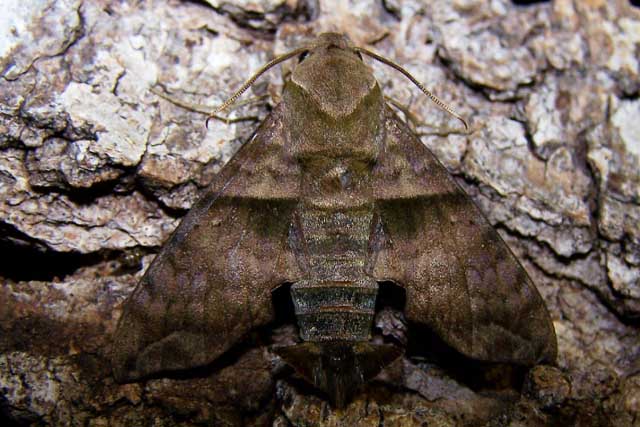
Perigonia lusca, Paraguay, PYBIO.
This site has been created by
Bill Oehlke at oehlkew@islandtelecom.com
Comments, suggestions and/or additional information are welcomed by Bill.
TAXONOMY:
Family: Sphingidae, Latreille, 1802
Subfamily: Macroglossinae, Harris, 1839
Tribe: Dilophonotini, Burmeister, 1878
Genus: Perigonia Herrich-Schaffer, ]1854] ...........
Species: lusca (Fabricius, 1777)
|
MIDI MUSIC
.....It's a Wonderful World.....
copyright C. Odenkirk
ON.OFF
<bgsound src="world.mid" LOOP=FOREVER>
|
DISTRIBUTION:
The Half-blind Sphinx or Coffee Sphinx, Perigonia lusca (wingspan: 55-65 mm), moths fly in
Central and South America:
Mexico: Quintana Roo (BT) and elsewhere; to
Panama: Panama: Radisson and Gamboa;
Cuba;
Venezuela;
Paraguay:
Alto Paraguay, Boqueron, Presidente Hayes, Central, Concepcion,
San Pedro, Canindeyu, Alto Parana, Cordillera, Paraguari, Caaguazu,
Guaira, and probably Amambay, Caazapa and Itapua;
Argentina unconfirmed;
Honduras;
Brazil: southern Maranhao;
Colombia: Meta;
Ecuador;
Peru: Junin: Shima (700m);
Bolivia: La Paz (1100m), Santa Cruz (450m);
Bahamas, Cuba, Puerto Rico, St. Vincent, etc., and also range into the southern U.S.
In
south Florida and Texas there are several broods each year.
On the Galapagos Islands, moths are on the wing in April and July.
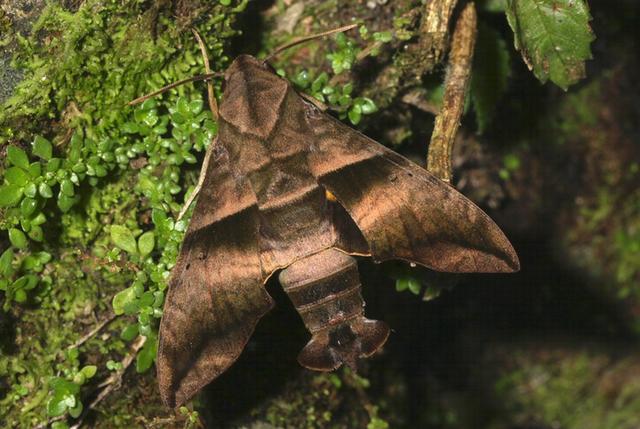
Perigonia lusca male, Shima, Junin, Peru,
June 12, 2010, 700m, courtesy of Peter Bruce-Jones.
The forewing has a dark, slightly irregular, inwardly concave, thick line running from the apex to the anal angle.
A prominent, very straight, dark am line is outwardly shaded in dark brown more widely along the inner angle, tapering toward the costa.
There is a small black dot at the base of the costa midpoint, and a slightly larger black, short black streak in the cell.
The hindwing yellow band varies from broad and well developed (form lusca) through divided
(form interrupta) and highly reduced (form restituta), to absent (form tenebrosa).
The tornal patch on the hindwing underside is buff.
Gregory Nielsen has sent the following recto and verso images from Colombia.
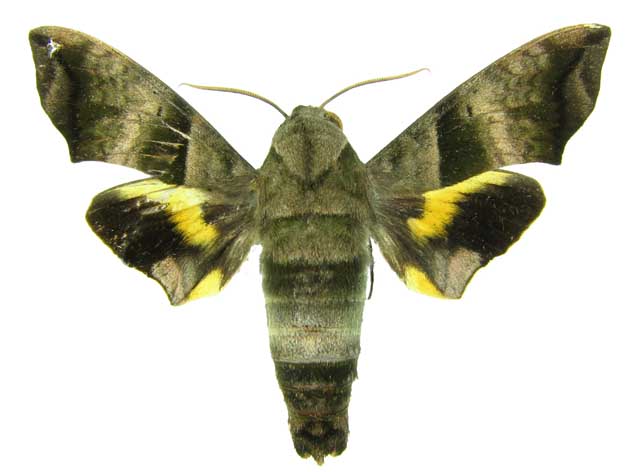
Perigonia lusca, Villavicencio, Meta, Colombia,
Km 13 via Acacias, 04°03’55.0 N 073°41’87.0 W
FWL = 28mm; January 10, 2011, courtesy of Gregory Nielsen.
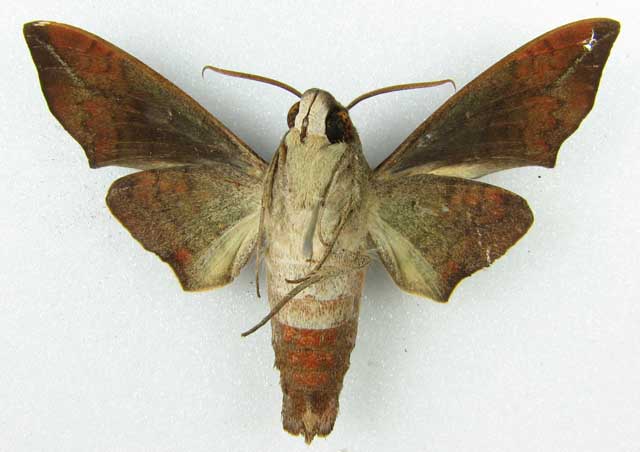
Perigonia lusca (verso), Villavicencio, Meta, Colombia,
Km 13 via Acacias, 04°03’55.0 N 073°41’87.0 W
FWL = 28mm; January 10, 2011, courtesy of Gregory Nielsen.
The genus name "Perigonia" POSSIBLY was chosen to reflect the bud like tufts of hairs near the tip of the abdomen.
"Lusca" means "one-eyed" or "half-blind".
The pronunciation of scientific names is troublesome for many. The "suggestion" at the top of the page is
merely a suggestion. It is based on commonly accepted English pronunciation of Greek names and/or some
fairly well accepted "rules" for latinized scientific names.
The suggested pronunciations, on this page and on other pages, are primarily put forward to assist those who hear with internal ears as they read.
There are many collectors from different countries whose intonations and accents would be different.
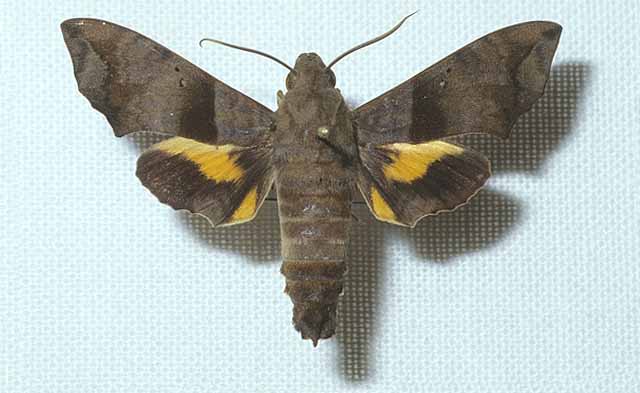
Perigonia lusca male, courtesy of Hubert Mayer
copyright.
FLIGHT TIMES:
Perigonia lusca has been taken in Costa Rica in all months of the year.
Tony James reports flights in Panama in April and June.
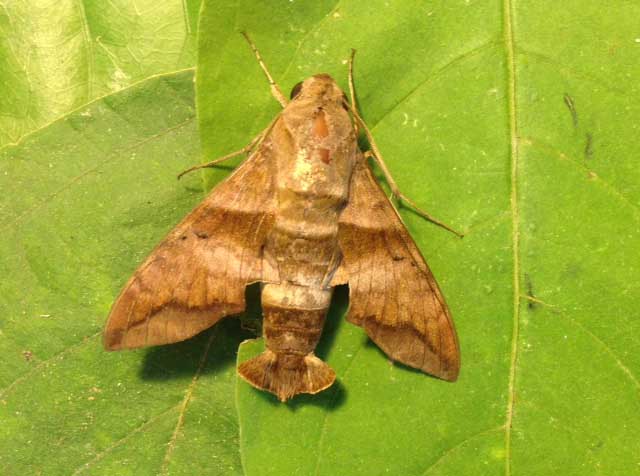
Perigonia lusca 60mm, Radisson, Panama, Panama,
April 16-19, 2015, courtesy of Tony James.
ECLOSION:
Moths emerge from pupae in shallow underground chambers.
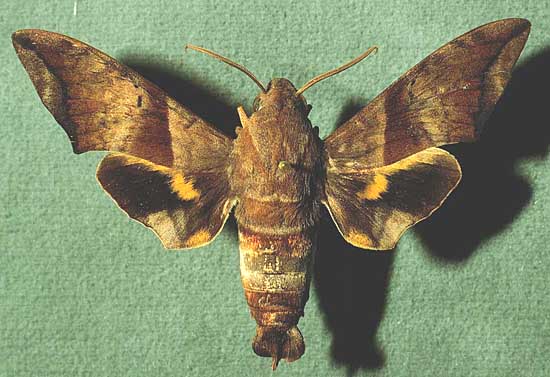
Perigonia lusca male courtesy of Dan Janzen.
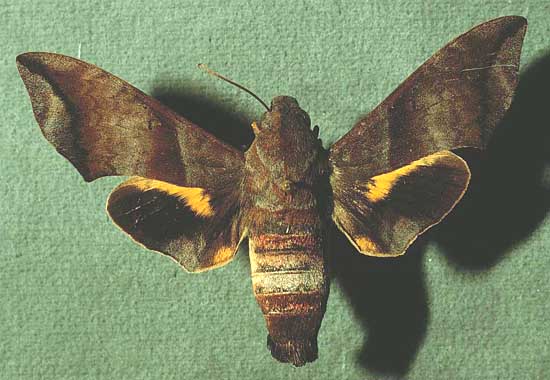
Perigonia lusca female courtesy of Dan Janzen.
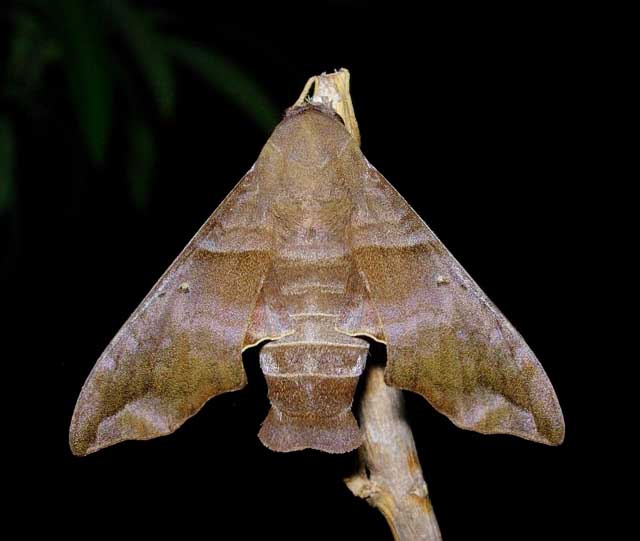
Perigonia lusca female, Playa del Carmen, Quintana Roo, Mexico,
March 2012, courtesy of Ben Trott.
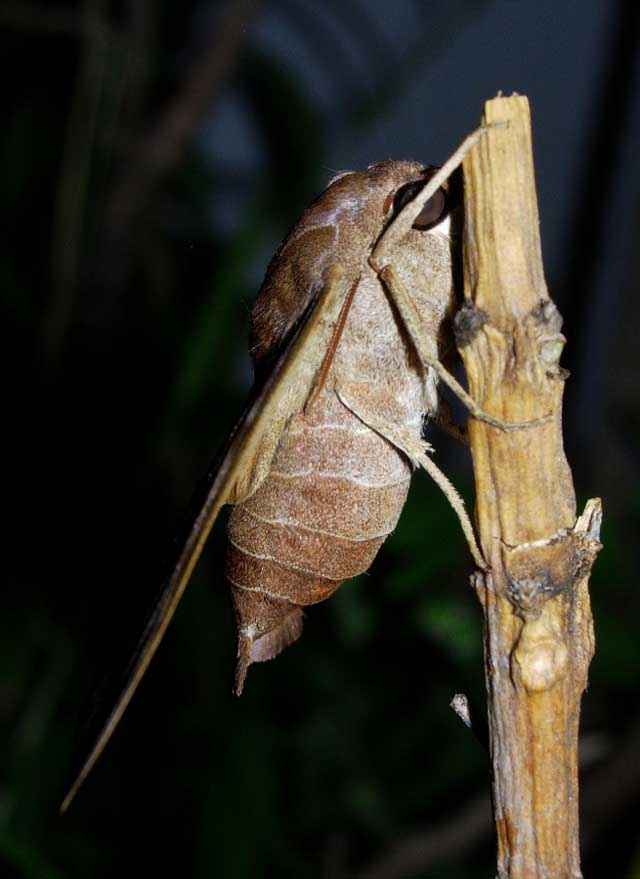
Perigonia lusca female, Playa del Carmen, Quintana Roo, Mexico,
March 2012, courtesy of Ben Trott.
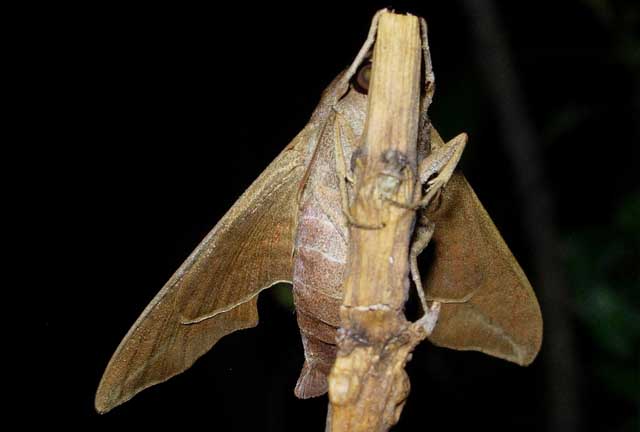
Perigonia lusca female, Playa del Carmen, Quintana Roo, Mexico,
March 2012, courtesy of Ben Trott.
SCENTING AND MATING:
Females call in the males with a pheromone released from a gland at the tip of the
abdomen. Adults nectar at flowers.
EGGS, LARVAE, PUPAE:
Larvae have a yellow tail horn, a green body and a dark blue stripe down the
back. There is at least one color morph. Larvae feed on Guettarda macrosperma of the Rubiaceae family.
Coffee (Coffea species) in the madder family (Rubiaceae) also serve as hosts and larvae can become serious pests.
In Florida, caterpillars have been reared on tawnberry holly (Ilex krugiana) in the holly family
(Aquifoliaceae) and on Rough Velvetseed (Guettarda scabra).
Genipa americana, Gonzalagunia, Ilex paraguariensis, Rondeletia,
Coffea arabica, Gonzalagunia spicata and Ilex krugiana
are also reported as hosts.
On the Galapagos Islands Cinchona
succirubra is reported as a larval host.
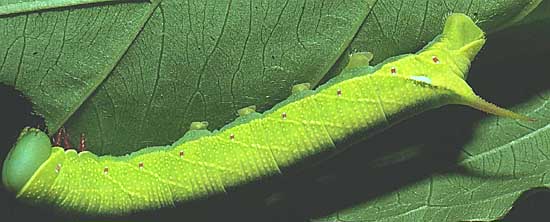
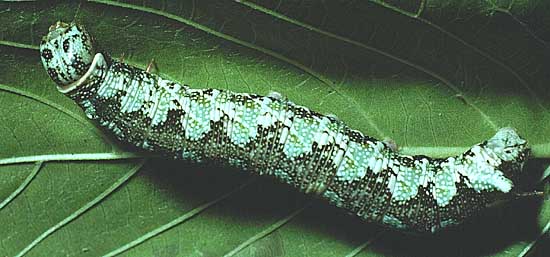
Moths emerge in as
few as twelve days after pupation.
Larvae are subject to parasitization by Leschenaultia sp. 14 of the Tachinidae family.
Ben Trott sends the following images from Quintana Roo, Mexico:
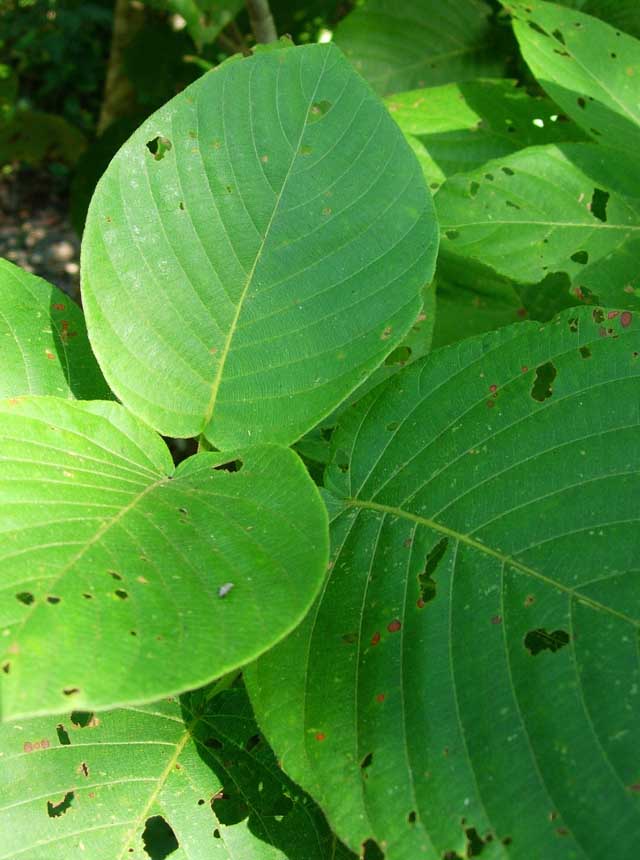
Perigonia lusca food plant, Playa del Carmen, Quintana Roo, Mexico,
courtesy of Ben Trott
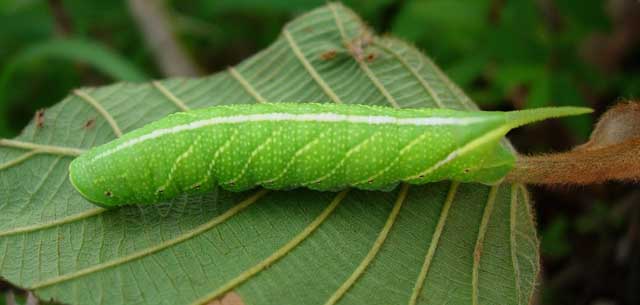
Perigonia lusca fifth instar (male), Playa del Carmen, Quintana Roo, Mexico,
courtesy of Ben Trott
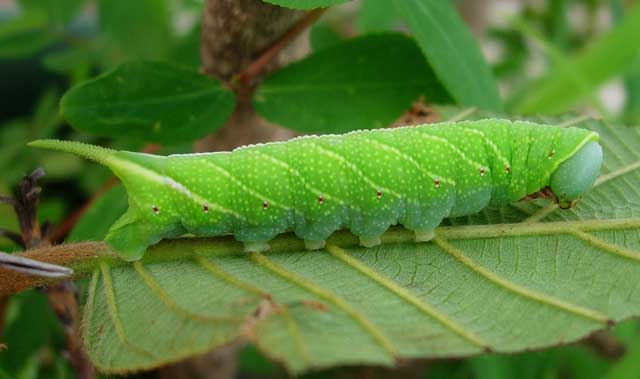
Perigonia lusca fifth instar (male), Playa del Carmen, Quintana Roo, Mexico,
courtesy of Ben Trott

Perigonia lusca fifth instar (female), Playa del Carmen, Quintana Roo, Mexico,
courtesy of Ben Trott
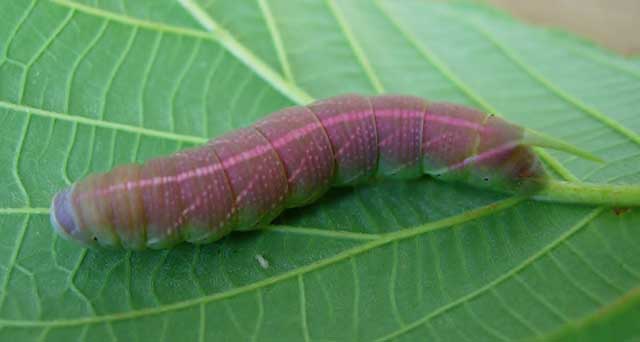
Perigonia lusca prepupal, Playa del Carmen, Quintana Roo, Mexico,
courtesy of Ben Trott
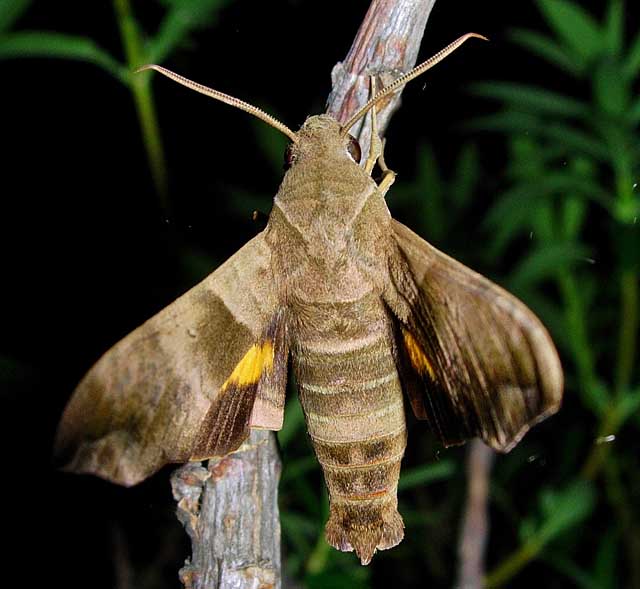
Perigonia lusca, Playa del Carmen, Quintana Roo, Mexico,
courtesy of Ben Trott
Use your browser "Back" button to return to the previous page.
Return to U. S. A. Table
Return to Sphingidae Index
Return to Dilophonotini Tribe
Goto Central American Indices
Goto South American Indices


















